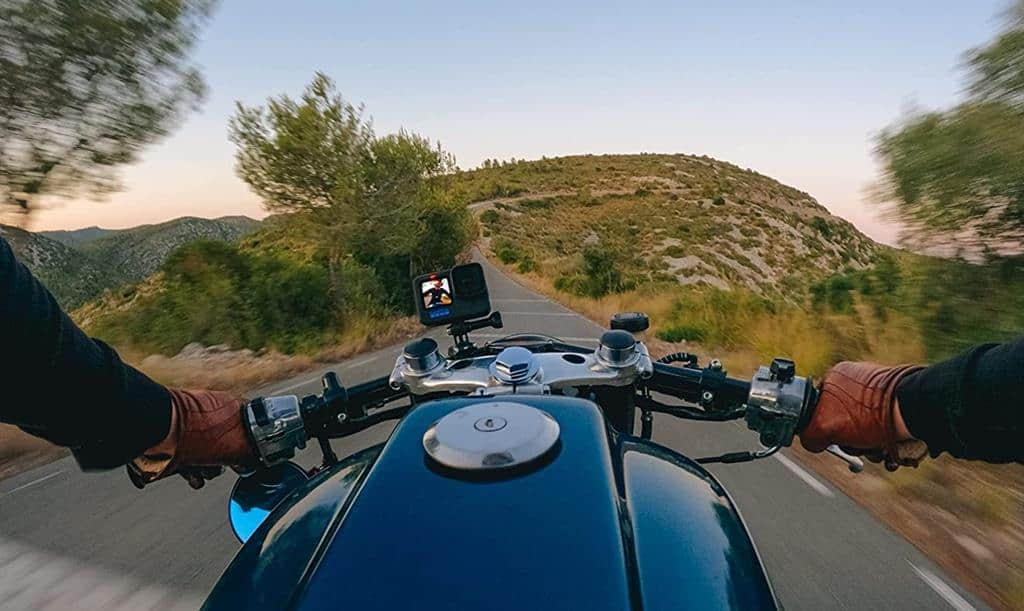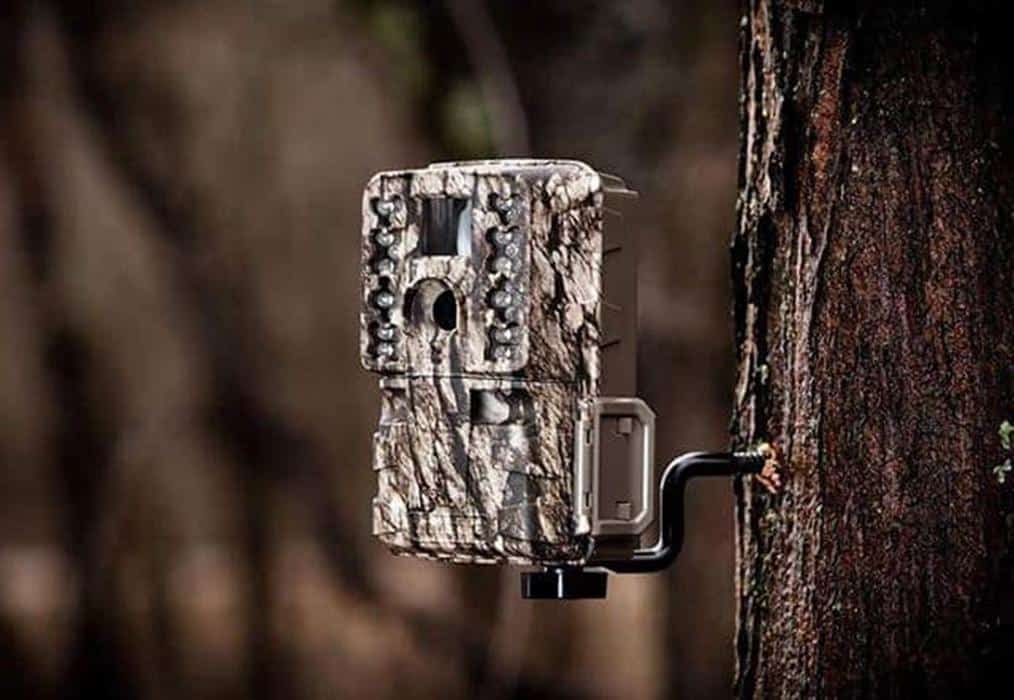Trail cameras are a great way to get wildlife photos, but do they need wifi? That depends on what you want to use the camera for. If you just want to take pictures and view them on your computer, then you don’t need wifi.
However, if you want to be able to view the pictures on your phone or tablet, then you’ll need WiFi.
There’s a lot of debate out there about whether or not trail cameras need WiFi. While some people say that WiFi is a necessity, others argue that it’s not worth the hassle. So, which side is right?
As far as we’re concerned, trail cameras do not need WiFi.
Here’s why you don’t need WiFi in you trail camera:
1. WiFi connections can be unreliable, especially in rural areas.
If your camera is relying on a wifi connection, there’s a good chance that it will lose signal at some point. And when that happens, you won’t be able to see what’s going on with your camera.
2. WiFi connections can also be slow.
This means that if you’re trying to view live footage from your camera, you might have to wait awhile for it to load. And who wants to wait around when they could be out enjoying the great outdoors?
3. Not everyone wants to deal with the extra hassle of setting up and maintaining a WiFi connection.
If you’re not tech-savvy, or if you just don’t want to deal with the extra steps involved in setting up wifi for your camera, then it’s probably not worth it for you. At the end of the day, it’s up to you whether or not you want to use wifi with your trail camera. But we think it’s unnecessary and more trouble than it’s worth.
The Different Types of Wireless Cameras and What You Should Know!
How Does a Trail Camera Work Without Wi-Fi?
If you’re wondering how a trail camera can work without Wi-Fi, the answer is fairly simple. Most trail cameras nowadays come equipped with an SD card reader. This allows you to insert an SD card into the camera, and the photos will be stored on the card.
You can then take the SD card out of the camera and insert it into your computer’s SD card reader to view the photos. Some higher-end trail cameras also come with built-in WiFi capabilities. This means that you can connect your camera to your home WiFi network and view the photos directly on your computer or smartphone.
However, these types of cameras are usually more expensive than ones without WiFi capabilities.
Do You Need Wi-Fi for Cellular Trail Camera?
No, you do not need Wi-Fi for a cellular trail camera. A cellular trail camera is a self-contained unit that uses a SIM card to connect to a cellular network. This allows you to remotely access your images and videos without the need for Wi-Fi.
Do Trail Cameras Have Built in Wi-Fi?
No, trail cameras typically do not have built in Wi-Fi. However, there are some camera models that offer the ability to add on a separate wireless module. This module would then allow you to connect your camera to a Wi-Fi network and remotely access it from your computer or smartphone.
How Do Trail Cameras Send Pic to Phone?
Trail cameras are a great way to keep an eye on your property or hunting grounds when you can’t be there in person. But how do they work? How do you get the pictures from the camera to your phone?
There are a few different ways that trail cameras can send pictures to your phone. Some models come with built-in WiFi, which will allow you to connect the camera to your home network and access the photos that way. Other models come with a separate transmitter that you can use to send the photos wirelessly to your phone.
And some newer models even have Bluetooth, so you can just pair the camera with your phone and transfer the photos that way. Most trail cameras will also come with an SD card, so you can just take the card out of the camera and insert it into your computer or phone to access the photos that way. Many of these cards will also have their own apps that you can use to view, edit, and share your photos.

Credit: www.amazon.com
Trail Camera Without Wifi
Trail cameras are an essential tool for any serious hunter or wildlife enthusiast. They allow you to capture images and videos of wildlife in their natural habitat, without having to be there yourself. But what if you want to view your trail camera footage without having to lug around a laptop or other device with WiFi?
Is it even possible? Yes, it is possible to view your trail camera footage without WiFi. There are a few different ways you can do this.
One way is to use a portable storage device such as a USB flash drive or SD card. Simply insert the storage device into your trail camera, and then plug it into your computer when you want to view the footage. Another way to view your trail camera footage without WiFi is by using a wireless receiver.
This attaches to your trail camera and allows you to wirelessly transmit the footage to your computer or other device. This is a great option if you don’t want to have to physically remove the storage device from your camera each time you want to view the footage. No matter which method you choose, viewing your trail cam footage without wifi is easy and convenient.
So if you find yourself in a situation where WiFi isn’t available, don’t worry – you can still enjoy all the benefits of using a trail camera!
Do Cellular Trail Cameras Require a Subscription
You may have seen commercials for cellular trail cameras and wondered if you should buy one. Perhaps you already have a camera, but it doesn’t use cell service. Do you need to buy a new camera or upgrade your old one?
The answer is: maybe. It depends on what features you want in your camera, and how willing you are to pay for a subscription. Cellular trail cameras are popular because they allow users to remotely access their images.
You don’t have to go back to the camera site to check the pictures; you can just log into an app on your phone or computer. This is convenient if you’re monitoring a large area or if you can’t get to the camera regularly. However, convenience comes at a price.
In order to use most cellular trail cameras, you must pay for a data plan from the provider (usually around $5-10/month). This fee gives you access to the images stored on the camera’s SD card; without it, you won’t be able to see anything. If cost is a concern, consider whether paying for a subscription is worth the convenience of remote access.

There are some other things to keep in mind when deciding whether to purchase a cellular trail camera. One is that not all models offer this feature; if remote access is important to you, make sure that the model you choose has it. Another thing to consider is battery life; since these cameras rely on cell service, they tend to use up batteries more quickly than non-cellular models.
If possible, choose a camera with long battery life or invest in rechargeable batteries so that you don’t have to keep buying new ones. Overall, there are pros and cons of using cellular trail cameras.
It really comes down personal preference and needs as far as whether the monthly subscription fee is worth it . Weigh your options carefully before making a decision – after all ,the best way to figure out what works for you is by trying it out yourself!
How Do Trail Cameras Work
If you’re a nature enthusiast, chances are you’ve considered purchasing a trail camera. But how do these devices work? Trail cameras are designed to capture images or video of wildlife in their natural habitats.
Most models are equipped with infrared sensors that detect heat and movement, triggering the camera to snap a photo or start recording video. Some trail cameras can also be set to operate on a timer, so you can schedule when you want the camera to take photos or videos. This is especially helpful if you’re trying to document the activities of nocturnal animals.
Most trail cameras run on batteries, although some models can be plugged into an AC outlet. If you plan on using your trail camera in remote locations, it’s important to choose a model that doesn’t require an external power source. Otherwise, you may need to invest in a portable generator.
When shopping for a trail camera, pay attention to the resolution and frame rate of the device. Higher-quality cameras will produce clearer images and videos, making it easier to identify individual animals. You should also consider how much storage space the camera has—if you plan on taking lots of pictures and videos, look for a model with expandable memory (via an SD card).
Finally, make sure to purchase a weatherproof and durable trail camera; after all, these devices will be spending extended periods of time outdoors!
How Do WiFi Trail Cameras Work
A trail camera is a great tool for hunters and wildlife enthusiasts alike. But how do these cameras work? And what are the best settings to use to get the most out of your camera?
Here’s a quick breakdown of how WiFi trail cameras work: Most trail cameras today use infrared (IR) technology to take pictures or record videos. IR light is invisible to the human eye, but it’s picked up by the sensor in the camera.
When IR light hits an object, it reflects back off of that object and into the camera lens. The sensor then records this information and creates an image. Trail cameras typically have two different modes: day mode and night mode.
Day mode is used when there’s plenty of natural light available, like during daylight hours. Night mode is used when there’s little to no natural light available, like during dawn or dusk hours, or at night. Night mode usually produces lower-quality images than day mode because it relies on the IR light emitted by the camera itself rather than natural sunlight.
The best way to get high-quality images from your trail camera is to experiment with different settings until you find what works best for your particular needs. Some things to keep in mind include: -The distance of your subject: If your subject is too far away, they may appear blurrier in the photo.
Conversely, if they’re too close, parts of them may be cut off in the frame. -The lighting conditions: Again, if it’s too dark or too bright outside, this can affect the quality of your photos. -The angle of view: You may want to experiment with different angles to get a better shot of your subject matter.
For example, pointing the camera slightly downward can help capture animals that are walking or crawling on the ground below.
How Do Cellular Trail Cameras Work
If you’re a wildlife enthusiast, you’ve likely heard of cellular trail cameras. These battery-powered devices are commonly used by hunters and researchers to remotely capture images or videos of animals in their natural habitats. But how do they work?
Cellular trail cameras rely on a technology called cellular networking. This allows the camera to connect to a cell tower, just like your smartphone does, and transmit data wirelessly. This is different from traditional trail cameras, which require a physical connection (usually via Wi-Fi) in order to transfer data.
One of the main benefits of using a cellular trail camera is that it doesn’t require any additional infrastructure – you don’t need to set up a Wi-Fi network or run any cables. All you need is a power source for the camera (usually batteries) and an active SIM card with data allowance. Once the camera is connected to the cell network, you can access it remotely using your smartphone or computer.
This means you can check live footage or review images and videos without having to physically visit the camera location. You can also receive alerts when the camera detects motion, so you’ll never miss a moment!
Are Cellular Trail Cameras Worth It
If you’re a serious hunter, chances are you’ve considered purchasing a trail camera. Trail cameras are an invaluable tool for scouting game, and can give you a major advantage come hunting season. But with so many different models and features on the market, it can be tough to decide which one is right for you – especially when it comes to price.
One of the most popular questions we get is whether or not cellular trail cameras are worth the investment. And truthfully, there’s no easy answer. It really depends on your specific needs and budget.
Let’s break it down. Traditional trail cameras typically run on AA batteries, which means you have to physically go out to the camera to retrieve your photos (or wait until hunting season is over). This obviously isn’t ideal if you’re trying to stay covert or don’t want to disturb your hunting grounds too much.
Cellular trail cameras, on the other hand, use a SIM card to send your photos directly to your phone or email – no matter where you are in the world. This means you can check your camera remotely, without ever having to step foot on your property (great for those who live far away from their hunting land!). However, this convenience comes at a cost – literally.
Cellular trail cameras tend to be more expensive than traditional ones, and often require a monthly service plan in order to function properly. So if you’re on a tight budget, a traditional camera may be the way to go. At the end of the day, only YOU can decide if a cellular trail camera is worth the investment.
Weigh out the pros and cons and decide what’s best for YOUR needs. Happy hunting!
Cheapest Cellular Trail Camera Plan
If you are looking for a cheap way to get started with a cellular trail camera, this is the plan for you. For just $5/month, you can have a camera that will send photos and videos directly to your phone or email. This plan includes up to 5GB of data per month, which should be plenty for most people.
If you need more data, you can always upgrade to a higher plan.
Conclusion
No, trail cameras do not need WiFi. They are designed to be used without WiFi or cellular service.



